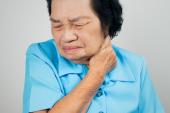INOCA Exerts Heavy Toll on Daily Life: Survey
The patients, mostly women, had symptoms for years prior to diagnosis, with ongoing fallout for quality of life, work, and more.

(UPDATED) Ischemia with no obstructive coronary arteries (INOCA) produces symptoms that affect physical functioning, mental health, and quality of life, a new survey of patients diagnosed with the condition makes clear. Many saw their relationships with loved ones affected and their careers stalled.
The results, from nearly 300 respondents belonging to INOCA International’s patient support group, are described in a paper published recently in the International Journal of Cardiology.
Lead investigator Martha Gulati, MD (Smidt Heart Institute, Cedars-Sinai Medical Center, Los Angeles, CA), told TCTMD their work was inspired by an earlier, less-formal survey conducted by INOCA International, noting that one of the current study’s co-authors is Maria George, founder of the nonprofit group.
“We felt that this had not been documented [in the literature] and that it was something the healthcare community needed to know. We don’t know sometimes how these diseases affect quality of life, [which] really does matter. And we were pretty shocked by the findings, actually,” said Gulati.
INOCA International Members
Gulati and colleagues opened the survey to the 1,570 members of the INOCA International patient support group for a 2-month period in late 2021. In all, 297 people took part, for a response rate of 21%. Among them, 91% were women and nearly two-thirds were diagnosed between age 40 and 60 years. The most common diagnoses were coronary microvascular dysfunction (64%) and coronary artery spasm (51%). Nearly one-quarter (23%) had a history of MI. Also common were migraines (47%), any adverse pregnancy outcome (47%), and miscarriage (25%).
Forty percent said they’d had INOCA symptoms for 1-5 years, 21% for 5-10 years, 16% for 10-20 years, and 7% for more than 20 years.
Fully 93% reported experiencing chest pain, pressure, or discomfort, while 81% cited shortness of breath. Common triggers of INOCA included stress (80%), exercise/exertion (73%), and excitement/high emotional state (69%). Around a third of women who’d undergone menopause said their symptoms changed at that time.
Survey participants were asked to describe their activity level performed before versus after symptom onset, information that was then used to retrospectively estimate functional capacity by means of the Duke Activity Status Index (DASI). Functional capacity was higher, they said, before symptoms began than it was after (mean 8.6 vs 5.6 METs; P < 0.001).
The majority said that INOCA symptoms adversely impacted their home life (81%), social life (80%), mental health (70%), overall outlook on life (70%), sexual activity (56%), and relationship with their partner or spouse (54%). There also were career consequences: 56% reduced their work hours, 48% retired early, and 38% successfully applied for disability benefits. Notably, the greater patients’ reduction in functional capacity, the worse fallout they’d see in terms of daily life.
Yet for many of the patients with INOCA, their condition wasn’t taken seriously.
The majority of respondents (78%) were told their symptoms weren’t cardiac, with 53.9% instead told the symptoms were due to gastroesophageal reflux and 32% evaluated by upper endoscopy. Noninvasive imaging was ultimately done in 93% and invasive imaging in 73%. By comparison, just 33% had cardiac catheterization with acetylcholine testing, despite invasive coronary function testing being a class 2A recommendation for INOCA assessment and classification in the 2021 chest pain guidelines.
Just 6.4% received their INOCA diagnosis at their first consultation. Half had sought care from at least three cardiologists for their INOCA concerns, around one-third were referred to a psychiatrist, and 42% went on an antidepressant. Indeed, two-thirds “reported that they were told that although their symptoms of INOCA may be unpleasant, they could not die from INOCA or have a heart attack,” the investigators note.
Jacqueline E. Tamis-Holland, MD (Mount Sinai Morningside Hospital, New York, NY), who did not take part in the study, highlighted this lack of awareness among clinicians when commenting on the results for TCTMD. "These findings are particularly bothersome and underscore the importance of educating the community of physicians caring for patients with chest pain. If all cardiologists and internal medicine doctors recognized this syndrome, then patients may receive a proper diagnosis and treatment earlier in their clinical course. Until then, many patients will continue to go undiagnosed," she stressed in an email.
Nearly four in 10 respondents said they never were under the care of a cardiologist specializing in INOCA, and 35.7% referred themselves to a specialist. Approximately half said they were currently receiving such expert care.
We don’t know sometimes how these diseases affect quality of life, [which] really does matter. And we were pretty shocked by the findings, actually. Martha Gulati
The fact that so many survey takers continued to experience symptoms, even when specialized care was obtained, is revealing, said Gulati. “What that tells us is right now we don’t have guideline-directed therapies for INOCA, because we don’t know what the optimal therapy for INOCA is,” she explained. “I will always say that INOCA is a bit of a bucket—a whole bunch of diagnoses go into that and the therapies for each will be different. So if you have coronary microvascular dysfunction, you’re going to get a very different therapy than somebody who has vasospasm, and then there’s people who have a combination of the two: you don’t have to have just one.”
Cardiologists taking care of INOCA patients often go through a process of “trial and error,” Gulati noted, to address symptoms. The randomized CorMiCA trial showed in 2018 that testing for and identifying INOCA are important, but exactly what should be done following diagnosis is less well understood, she added. “We need better treatment. That is the challenge for INOCA in general.”
Right now, she noted, the WARRIOR trial is recruiting women with symptoms and/or signs of ischemia but no obstructive CAD in an attempt to test whether intensive medical treatment can improve outcomes compared with usual care.
Gulati stressed it’s important to realize that many INOCA patients undergo cardiac catheterization, with or without other tests, and then are only told they don’t have obstructive coronary disease. Clinicians, if they see someone with this history, should take any ongoing symptoms seriously and pursue further evaluation, she advised. “Not only will this help the general cardiologist target therapies toward that specific patient, but it also will help patients know what their diagnosis is.”
It may or may not be possible, due to cost, transportation, and other barriers, to send patients to centers with an INOCA focus, she acknowledged. But even less-specialized centers can pursue a diagnosis. Beyond invasive functional testing, the 2021 US chest pain guidelines’ INOCA pathway makes room for PET scanning, cardiac MRI, and stress echocardiography, said Gulati.
Caitlin E. Cox is News Editor of TCTMD and Associate Director, Editorial Content at the Cardiovascular Research Foundation. She produces the…
Read Full BioSources
Gulati M, Khan N, George M, et al. Ischemia with no obstructive coronary artery disease (INOCA): a patient self-report quality of life survey from INOCA International. Int J Cardiol. 2022;Epub ahead of print.
Disclosures
- Gulati reports no relevant conflicts of interest.





Comments